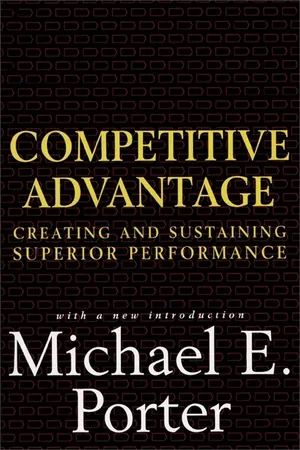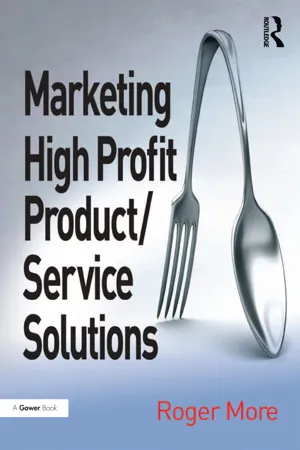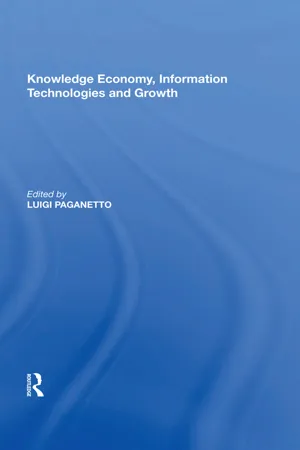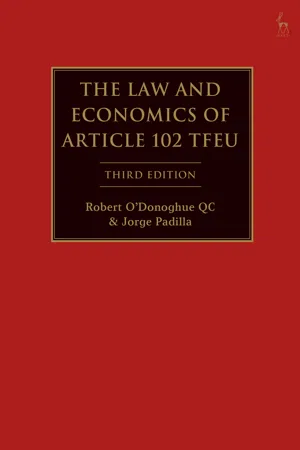Business
Commodity Bundling
Commodity bundling is a marketing strategy where a company offers several products or services as a package deal. The goal is to increase sales and customer loyalty by providing convenience and value. This strategy is commonly used in industries such as telecommunications, software, and entertainment.
Written by Perlego with AI-assistance
Related key terms
Related key terms
1 of 4
Related key terms
1 of 3
4 Key excerpts on "Commodity Bundling"
- eBook - ePub
Competitive Advantage
Creating and Sustaining Superior Performance
- Michael E. Porter(Author)
- 2008(Publication Date)
- Free Press(Publisher)
Some buyers of antiknock compounds, for example, would prefer to sacrifice the service provided by manufacturers in return for a lower price, but they do not have that option. Buyers often differ in their receptiveness to bundling because they want different collections of products or services, or because they differ in the intensity of their need for the various products or services. In either case, bundling is suboptimal for some buyers. Bundling will not be desirable unless it has some countervailing benefits that overcome the fact that it is suboptimal for some buyers. Bundling can create competitive advantage in a number of ways, however, that vary in importance from industry to industry and even by industry segment. In some industries bundling also has significant risks that must be identified. Competitive Advantages of Bundling The potential competitive advantages grow broadly out of the ability to share activities in the value chains for providing parts of the bundle if the entire bundle is supplied together. The advantages of bundling can be grouped into a number of categories: Economies of Providing the Bundle. A firm may lower its costs by providing only a single package instead of whatever mix of products or services a particular buyer desires. These economies arise from interrelationships in a firm’s value chain that can be exploited by supplying only the package. Bundling can allow a firm to better share activities in the value chain in supplying the parts of the bundle. If the same bundle of products is sold to each buyer by the same salesperson, shipped on the same truck, or serviced by the same technician, for example, there may be cost savings in providing the bundle together. The price of the bundle could thus be lower than the collective price of the individual parts - eBook - ePub
- Roger More(Author)
- 2016(Publication Date)
- Routledge(Publisher)
1 The Global Expansion of New Product/service Integrated Customer Solutions: The Bundling ConceptRoger More, 2012In rapidly changing global competitive business to business (B2B) marketplaces, one of the fastest growing competitive market strategies is the bundling of complex value-added integrated product/service customer solutions.Introduction
The huge growth in the size and complexity of integrated product/service bundled market offerings in virtually every competitive global business-to-business market represents important future competitive opportunities for many companies. Companies are increasingly competing on “bundles” of products and services that differentiate them and that customers will value and choose. This chapter will map and outline what products are, what services represent, and the different strategic choices companies have for product/service strategies in different competitive markets, citing many examples. It will outline and illustrate product-centric strategies, service-centric strategies and product/service integrated strategies. The changes in product/service integration and bundling represent great opportunities to grow markets and long-term potential cash flows for many companies of all sizes and industries. It is important for managers to be clear about the differences and connections between products and services in B2B markets.The chapter will then proceed to map the most important alternative product/service market positions that need to be considered. It will outline three different broad market focus positions – product-centric bundles, service-centric bundles, and product/service integrated bundles – examining a series of companies that exemplify these strategic choices in their product and service portfolios. The chapter will conclude with a series of important questions for managers facing these difficult product and service strategic choices. - Luigi Paganetto(Author)
- 2017(Publication Date)
- Routledge(Publisher)
Bundling also helps minimize selling and billing costs. Bundling allows the seller to maintain a single inventory entry for the bundle, rather than individual inventory records for each component in the package. Likewise, the seller can submit a single bill for the entire bundle, rather than a separate charge for each component.Bundling also promotes incentives for sellers to assemble supplies and other complementary goods that work well together. When a durable capital good and other complementary goods are sold separately, purchasers may buy complementary goods of inefficiently low quality, causing the capital good to operate poorly. When the inferior complements make the whole system malfunction, the manufacturer of the core good or service may suffer unwarranted damage to its reputation that may well extend to many potential customers.This issue is most likely to arise when the technology is complex, and quality differences among competing brands of the complementary goods are hard to detect. First, buyers may simply be poorly informed about the specifications of the complementary goods needed for optimum performance, Moreover, when components are sold on a stand-alone basis, sellers may have inadequate incentives to inform consumers about system requirements. This is a ‘free rider’ problem: many of the benefits of educating buyers go to sellers of complementary or competing goods, even when these sellers contribute nothing to the cost of the education campaign. Second, because some costs of damage to a manufacturer’s reputation are external to any individual buyer, even, educated buyers may buy complements of poorer quality than optimal. Bundling can reduce the informational and other free rider problems. When the same vendor sells the bundle of complementary products – ‘the system’ – the vendor can set the quality of the complementary goods at the level necessary to make the system work, and can capture (through increased sales or profits) all the benefits of educating purchasers about the requirements for proper system operation.2- eBook - ePub
- Robert O'Donoghue KC, Jorge Padilla(Authors)
- 2020(Publication Date)
- Hart Publishing(Publisher)
Chapter 11 TYING AND BUNDLING11.1 . INTRODUCTIONDefinition. Tying and bundling generally refer to the combined sale of more than one product. Various types of tying and bundling can be distinguished, depending on how many components of a bundle/tie are also sold individually. At least three variants are distinguishable under EU competition law:1. Pure bundling is observed when neither of the package components is offered individually; they can only be acquired as part of the bundle. Thus, given two products, A and B, only the package A-B is available. Moreover, they are typically, though not always, offered in fixed proportions: e.g., a bottle of shampoo with a bottle of hair conditioner. Examples of pure bundling are fixed price lunch menus, bed with breakfast accommodation, and mandatory warranties. In Napier Brown-British Sugar ,1 for instance, the Commission condemned British Sugar’s practice of denying its customers the possibility to collect their orders directly from the factory, forcing them instead to use the producer’s delivery service.2. Tying refers to situations where some of the goods contained in a package are offered on their own (the so-called tied products), whereas others are not available individually (the tying products). Thus, consumers of the latter (the tying products) are forced to acquire the former (the tied products). For example, given two products, A and B, if product A is tied to product B a customer who wants to buy A must also buy B, whereas it is possible to buy product B without buying product A. Moreover, products can be tied together physically (i.e., a technological integration) as well as through contractual obligations that prescribe joint sale (i.e., a contractual tie). In Microsoft , the Commission found that Microsoft abused its dominant position by requiring OEMs to ship their PCs with Windows Media Player pre-installed. The Commission also concluded that such arrangement amounted to a technological tie from the perspective of consumers since it was impossible to remove the media player once installed by the OEM.2
Index pages curate the most relevant extracts from our library of academic textbooks. They’ve been created using an in-house natural language model (NLM), each adding context and meaning to key research topics.
Explore more topic indexes
Explore more topic indexes
1 of 6
Explore more topic indexes
1 of 4



